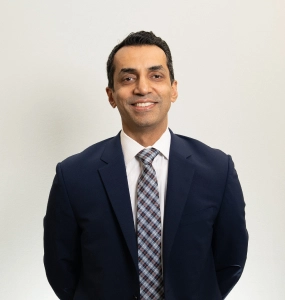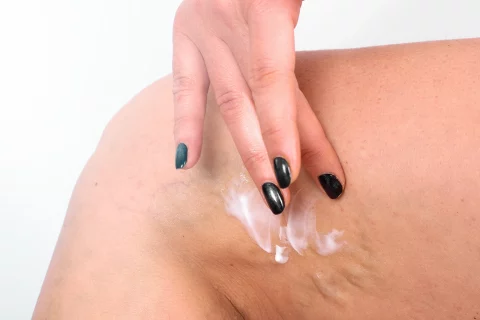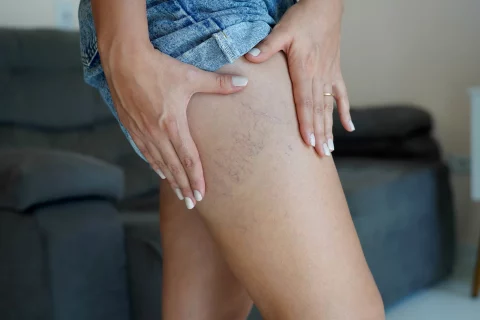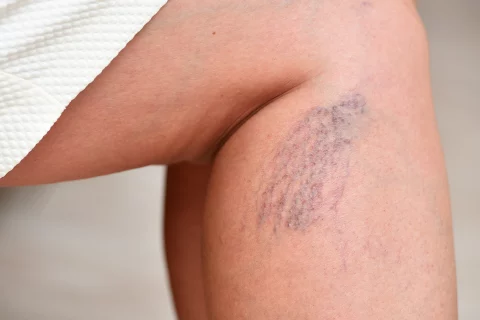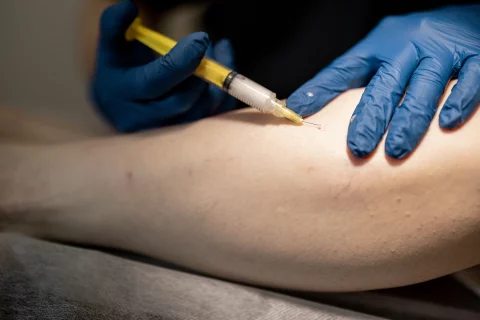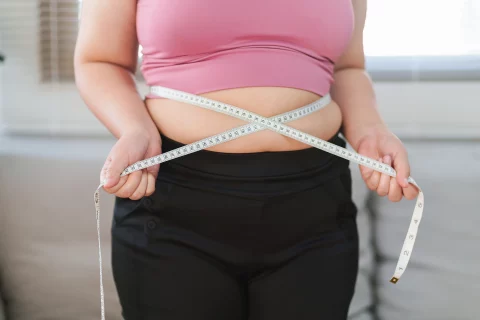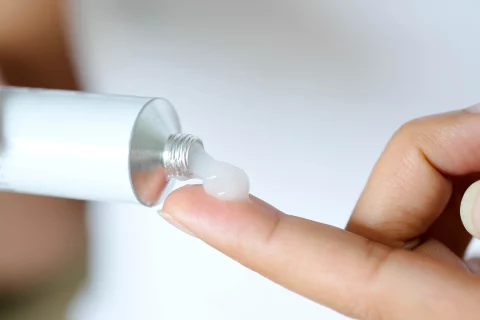Spider veins appear as linear red or purple branching marks most commonly seen on the legs. They are different than varicose veins which are larger and more rope-like in appearance.
Spider veins form as a result of damage to the tiny valves within these small surface veins. This causes blood to collect or “pool” close to the skin rather than properly flowing back to the heart from the legs.
Over time, the pressure of standing and gravity stretches and widens these fragile valves, giving spider veins their characteristic spiderweb-like look under the skin. They are not painful but can create self-consciousness due to their appearance.
How Do Spider Veins Feel When They Start?
Often, spider veins do not cause any pain or discomfort when they start, as they are usually superficial and cause no notable symptoms at onset.
Some folks may experience very mild sensations of fullness, tingling, or itching in the affected area from time to time. But generally spider veins do not feel abnormal at onset.
It is their cosmetic appearance under the skin that often leads to discovery initially, rather than any feelings of discomfort. Larger varicose veins deeper in the tissues are more likely to cause aching, heaviness, or throbbing sensations as they develop.
But those with only superficial spider veins near the surface may have no physical feelings to indicate their presence at the onset.
What kind of feelings or sensations might I experience, if any?
Some report very mild sensations of fullness, tingling or itching intermittently near the affected veins. But many feel no changes at all.
Do sensations ever worsen over time if left untreated?
In rare cases, larger underlying varicose veins could potentially cause aching, heaviness or discomfort if spider veins are indicative of more advanced venous insufficiency left unmanaged long-term. Consultation is recommended.
What should I look out for in terms of potential symptoms over time?
Signs like swelling, skin discoloration, dryness or pain could suggest needs for further medical investigation into venous disease severity beyond cosmetic concerns.
Reasons for Spider Veins

Here are some of the most common reasons why spider veins can develop:
Genetics – If a parent or other close family member has varicose or spider veins, there is an increased likelihood of developing them due to hereditary factors.
Pregnancy – The high pressure on leg veins from a growing uterus during pregnancy can cause damage over time. This is a major risk factor.
Prolonged standing – Any job or lifestyle that requires long periods of standing puts constant strain on the veins. This is exacerbated by factors like weight of lower body.
Obesity – Extra weight places more pressure on leg and pelvic veins over the years. Significant weight gain or loss also strains vessel walls.
Advanced age – As we age, vein walls naturally lose their elasticity, making them more vulnerable to damage from hydrostatic pressures over time.
Prior injury – Veins may have been weakened from past traumas like burns, wounds or ulcers near the leg surface.
Hormonal factors – Menstruation and menopause hormonal shifts could temporarily impact vein wall integrity for some.
Clothing/footwear – Constricting garments and high heels may increase resistance against blood flow back to the heart over the course of a day.
Is it normal to only see spider veins when standing?
Yes, gravity and hydrostatic pressure are the main reasons spider veins may only become visible in an upright position when legs are weight-bearing.
Can lifestyle changes help prevent spider vein symptoms?
Steps like exercising, losing excess weight, elevating legs and wearing compression can benefit venous health and potentially stave off unwanted sensations down the road for those at risk.
At what age are spider veins most common?
Spider veins may emerge starting as early as teenage years and become more prevalent among women in their 30s and 40s on average. Genetics and childbearing years play a role too.
Can daily activities and habits impact eventual sensations?
Factors like very hot baths, sun exposure, certain foods/drinks, and extended periods of sitting or standing without rest periods could influence longer term outcomes and venous compensation over the life.
When should I definitely see a healthcare provider for spider veins?
While often merely cosmetic, consulting is prudent whenever spider veins are accompanied by pain, skin discoloration or changes, or family history poses higher risk for complications without screening. Open communication optimizes good venous health.
If spider veins are newly noticed on the legs and cause no issues, they typically require no urgent treatment. Consulting a dermatologist or phlebologist is best for evaluating severity and options down the line.
FAQ About How Do Spider Veins Feel When They Start

What is the difference between spider veins and varicose veins?
Spider veins are very small, thin blue or red veins close to the skin’s surface that are often most visible on the legs. Varicose veins are enlarged, rope-like veins that are deeper and commonly cause symptoms such as pain, swelling, itching and skin changes.
When should I see a doctor about veins in my legs?
If you notice spider veins, varicose veins or have symptoms like pain, swelling or skin changes, see a dermatologist or vascular surgeon. They can properly examine you, discuss risk factors and order tests to diagnose any venous insufficiency or determine if non-surgical treatments or compression stockings could help alleviate discomfort.
What are some common causes and risk factors for leg vein issues?
Genetics, age, pregnancy, prolonged standing, obesity, sun exposure and certain medical conditions can contribute. Risk rises with a family history of spider/varicose veins, multiple pregnancies, hormonal changes, circulatory or clotting issues, being overweight or following occupations requiring much standing.
What non-invasive treatment options are available for spider veins?
Sclerotherapy, laser or radiofrequency treatments can safely remove spider veins. Endovenous laser ablation and radiofrequency ablation may cure varicose veins. Wearing medical compression hosiery may relieve symptoms. Success rates for these minimally-invasive procedures are very high with most patients seeing significant improvements.
How can lifestyle changes help prevent spider veins?
Simple steps like weight control, exercising regularly, elevating legs whenever possible, getting physical activity and avoiding long periods of sitting or standing can benefit overall circulation health. Maintaining skin care with sun protection and proper moisture also supports tissue and vascular health long-term.
